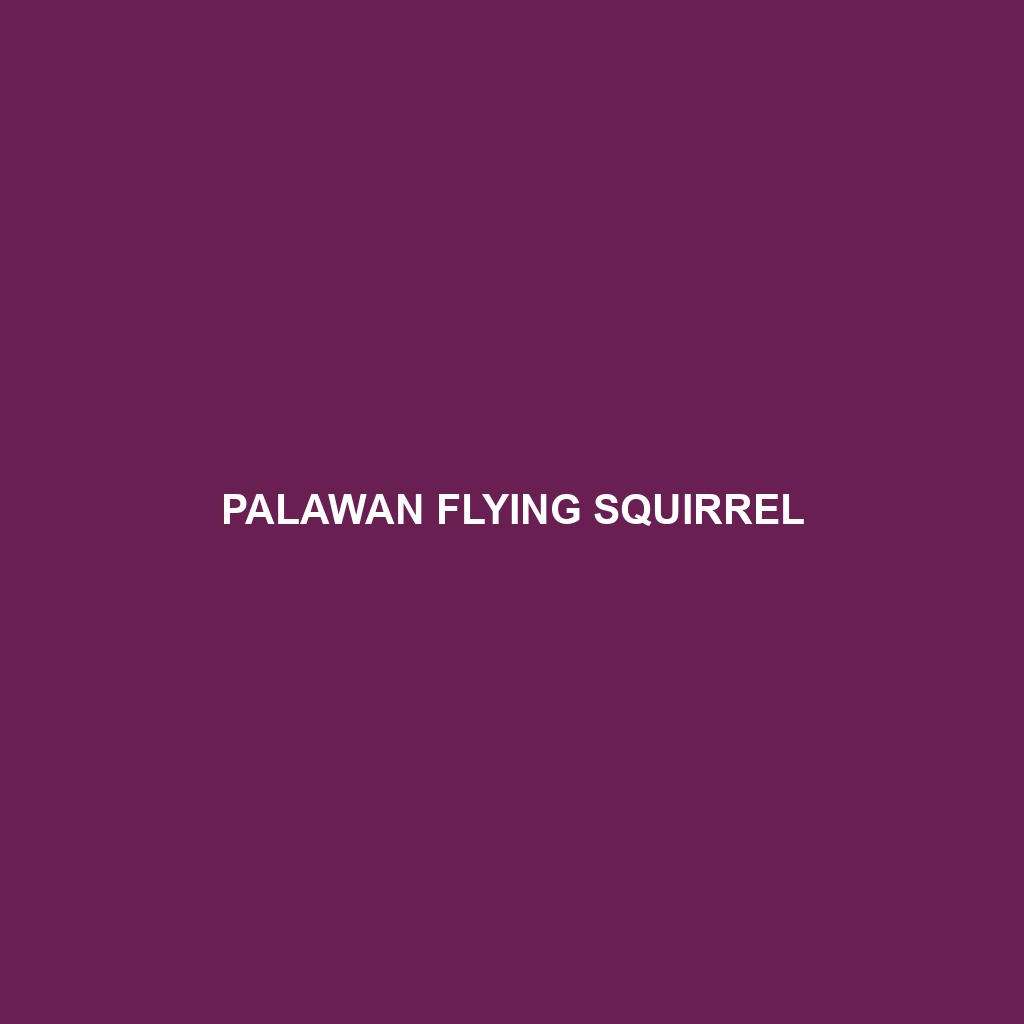Palawan Flying Squirrel
Common Name: Palawan Flying Squirrel
Scientific Name: Petinomys martin
Habitat
The Palawan Flying Squirrel is primarily found in the lush forests of Palawan, Philippines, an area known for its rich biodiversity and unique ecosystems. This arboreal species thrives in primary and secondary forests, favoring dense canopies and areas near river systems where they can glide from tree to tree.
Physical Characteristics
Adult Palawan Flying Squirrels typically measure between 30 to 40 cm in body length, with a tail that can be approximately the same length as their body, aiding in their gliding abilities. They have a soft, thick fur coat that varies in color from grey to brown, with a distinctive white underbelly. Notable features include large, expressive eyes, and a membrane stretching from their forelimbs to hind limbs, which enables them to glide gracefully through their forest habitat.
Behavior
Palawan Flying Squirrels are primarily nocturnal, making them active during nighttime hours. They exhibit social behaviors, often found in small family groups. Their gliding ability is one of the most remarkable aspects of their behavior, allowing them to escape predators and navigate their arboreal environment efficiently. During the day, these squirrels can often be seen resting in tree hollows or curled up in dense foliage.
Diet
The diet of the Palawan Flying Squirrel consists mainly of fruits, leaves, and nuts, making them primarily herbivorous. They have a particular fondness for soft fruits and can be seen foraging in the upper canopy for food. Their feeding habits play a crucial role in seed dispersal, aiding in the growth of various plant species within their habitat.
Reproduction
Palawan Flying Squirrels typically breed once a year, with the mating season occurring during the dry months from February to May. After a gestation period of about 60 days, females usually give birth to one or two offspring. The young are cared for by both parents and begin to glide successfully by the time they are 10 weeks old.
Conservation Status
According to the IUCN Red List, the Palawan Flying Squirrel is currently classified as vulnerable due to habitat loss resulting from deforestation and urban development. Conservation efforts are crucial to ensure the survival of this unique species and its habitat.
Interesting Facts
The Palawan Flying Squirrel can glide over distances of up to 150 meters, which is an impressive feat for such small mammals. Their agility and ability to glide help them evade predators such as birds of prey and snakes, making them fascinating creatures of the Palawan forests.
Role in Ecosystem
As a key species within their ecosystem, Palawan Flying Squirrels contribute significantly to the health of their forest habitat. By feeding on fruits and nuts, they help with seed dispersal, promoting plant diversity. Furthermore, as prey for larger predators, they also play an integral role in the food web, supporting the ecological balance of their environment.
